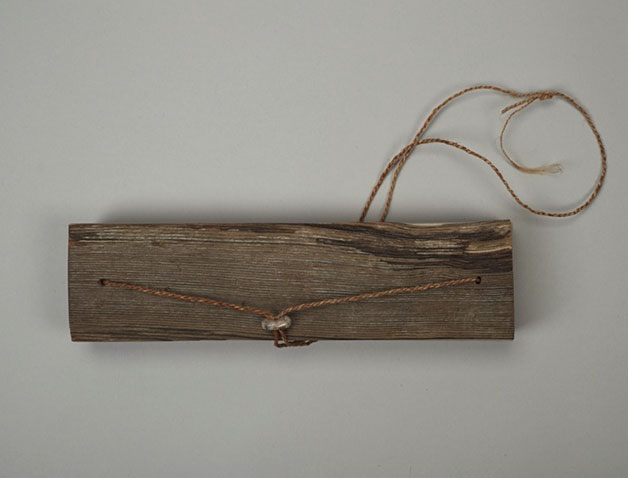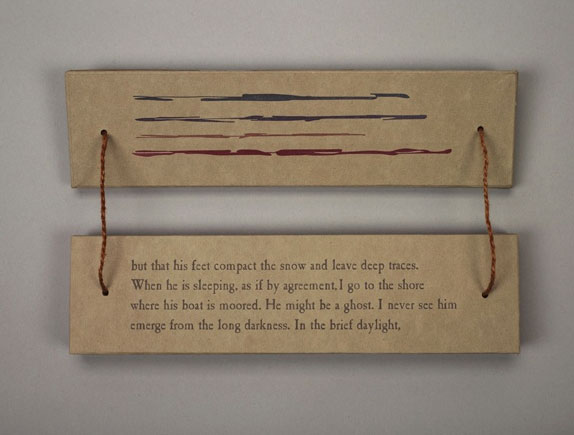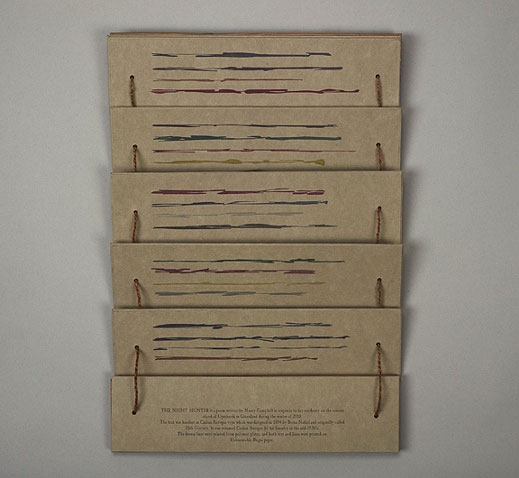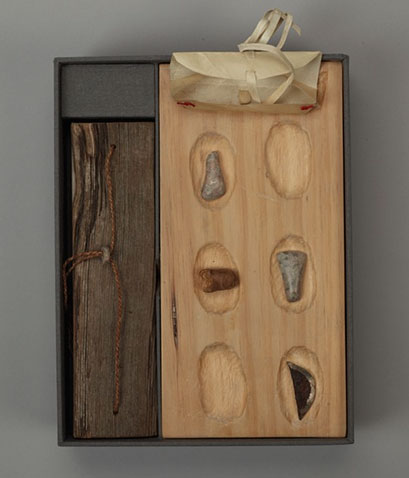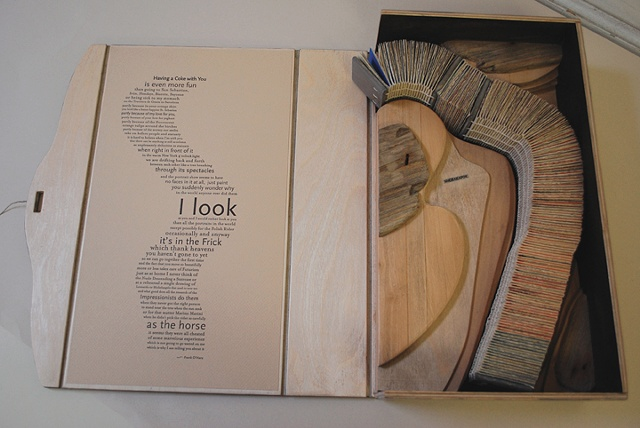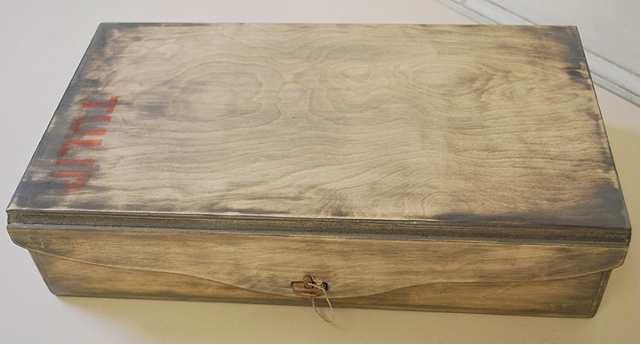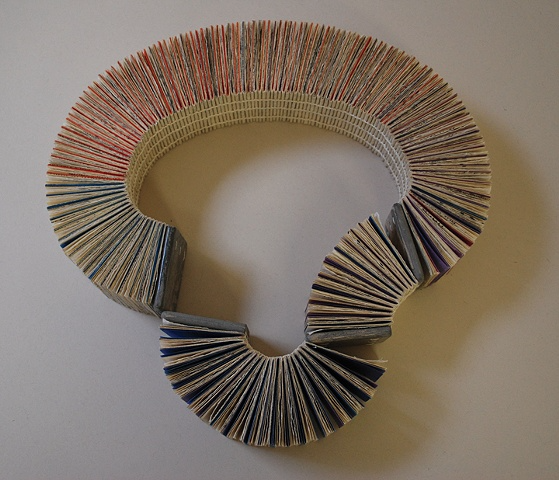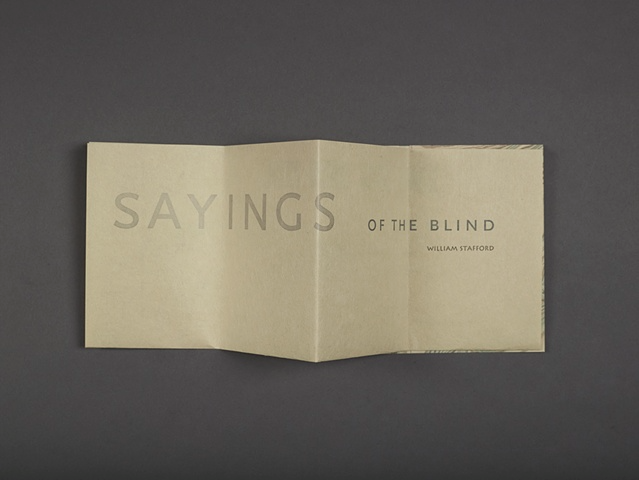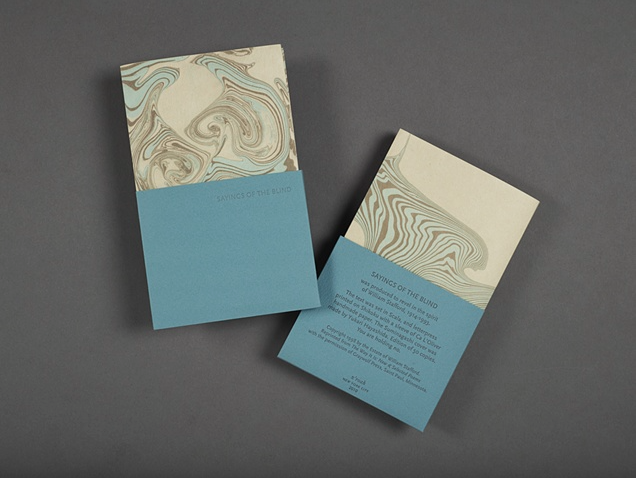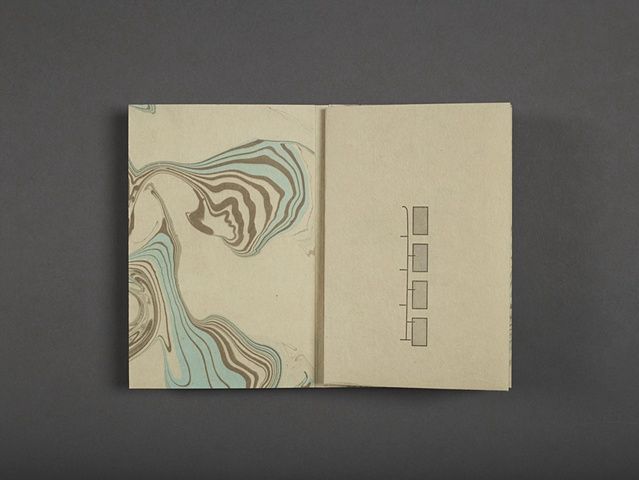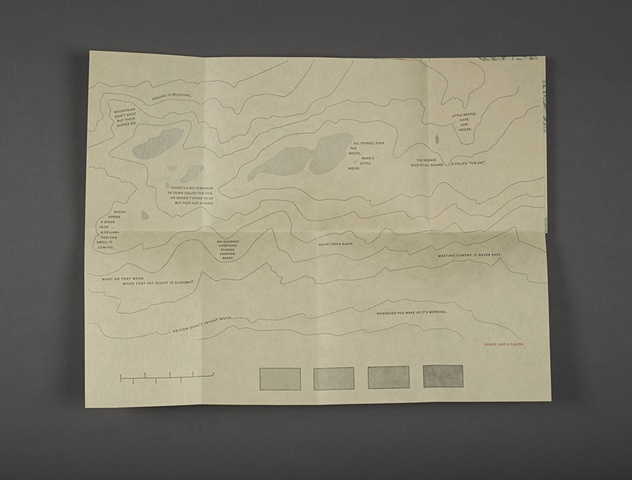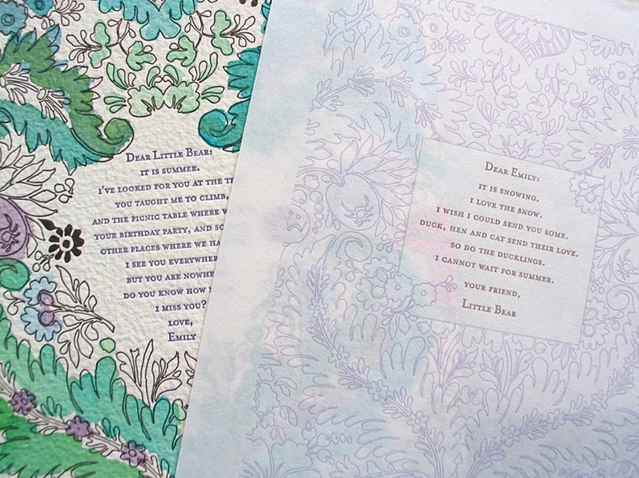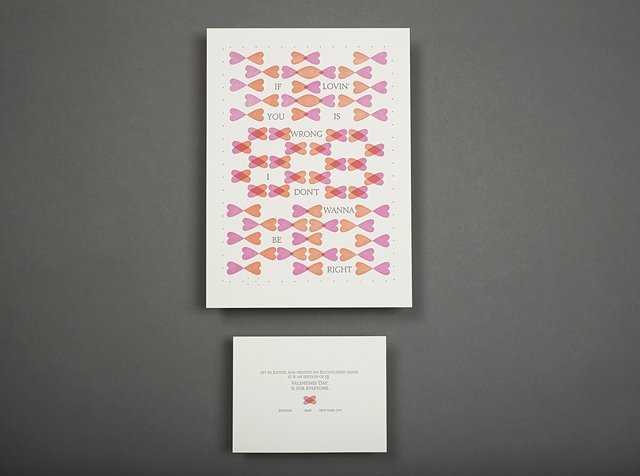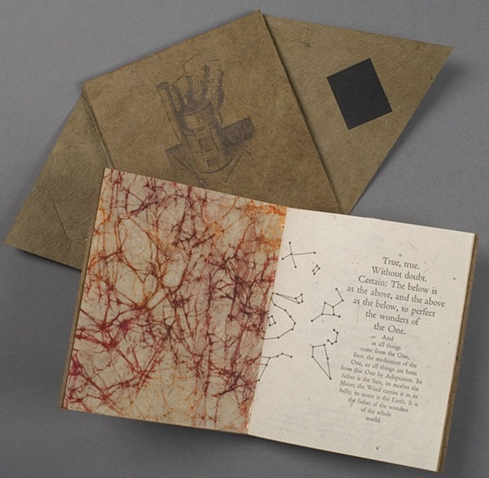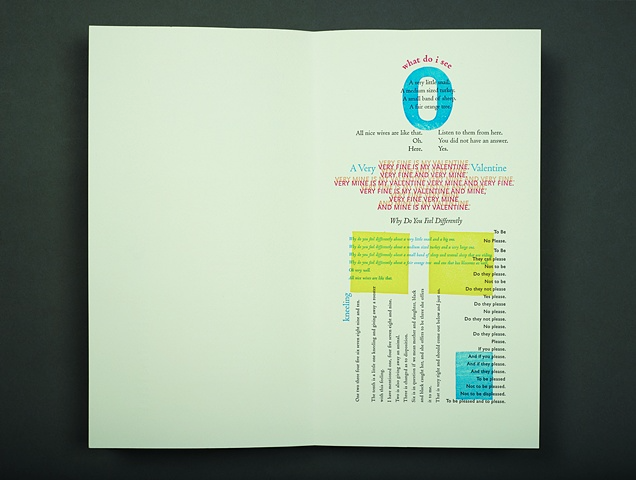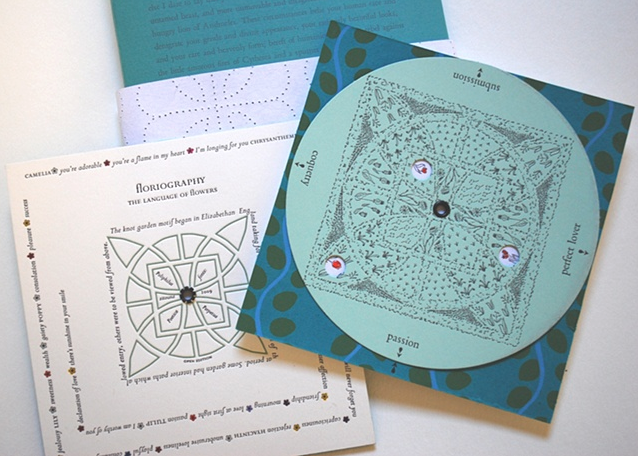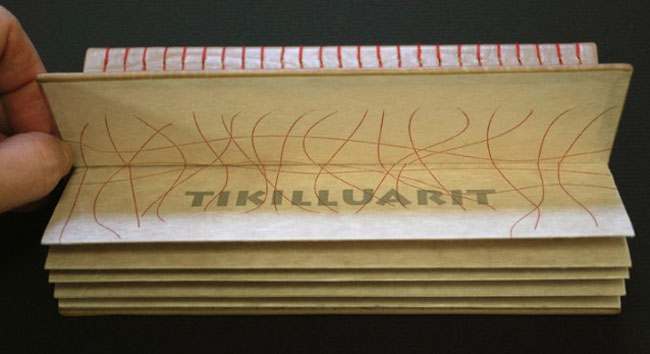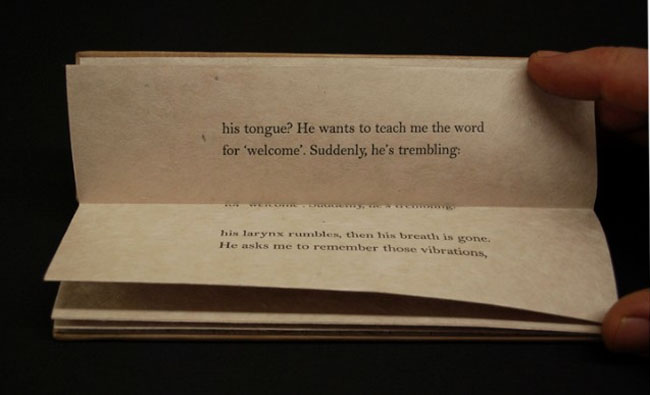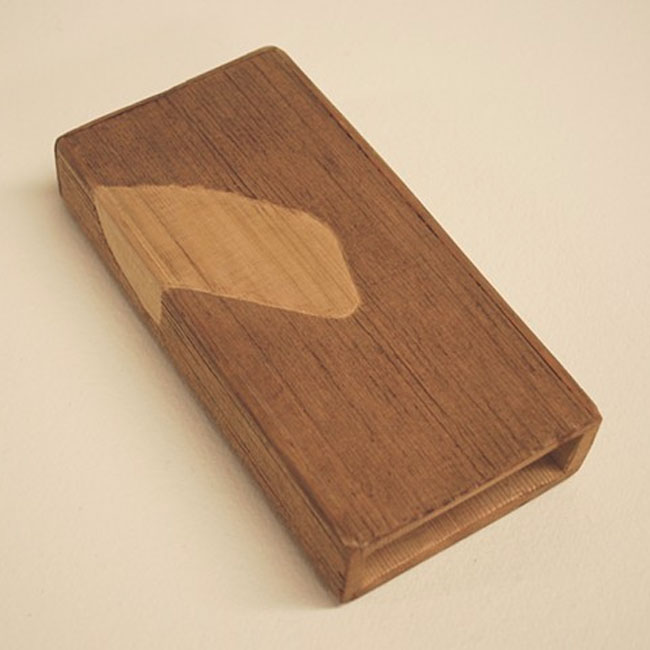The Night of the Hunter is another collaborative artist book between Roni Gross, Peter Schell and Nancy Campbell.
The text comes directly from a poem by Nancy Campbell of the same title, which was based on her residency on a remote island off the coast of Greenland during the winter of 2010. Roni reinterprets the text as a visual pattern of drawn colored lines repeating as the language repeats creating a unique landscape housed within a palm leaf structure. The poem is written as a pantoum, where lines repeat in specific patterns.
The book is paired with an interactive board game constructed from salvaged wood and game pieces made from found materials that have been shaped by Peter Schell. On Nancy’s blog, she explains these material elements of the artist book “are a perfect physical expression of the austere Arctic environment that I had tried to capture in the poem.“
The objects stored inside the rawhide pouch are meant to be placed in the depressions on the board. Can you describe the interaction between the reader, these objects and the story itself?
This work is an example of our interest in having the viewer participate in the telling of the story by feeling the objects – stone, bone and metal – and then placing them on the game board. There are not a lot of raw materials in Greenland, and so the materials are found or repurposed. The wood of the covers is driftwood, the cordage is made from dogbane – a natural fiber, and the game board was found wood. By holding these object, materials that the night hunter might encounter, you are entering his realm. Your freedom to place the pieces as you wish involves you in the unfolding of the poem.
